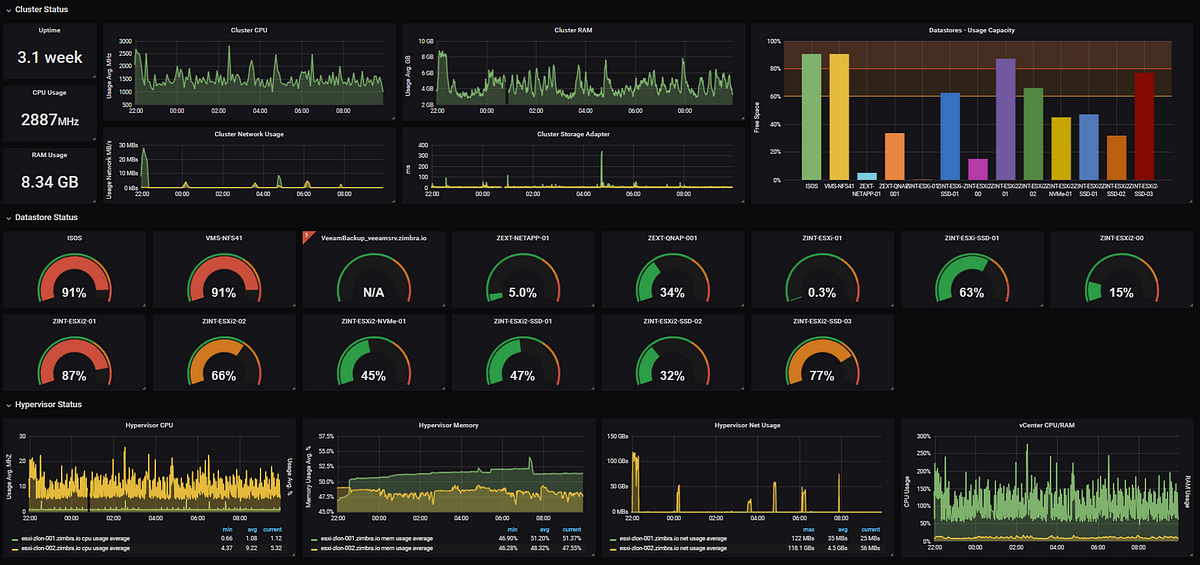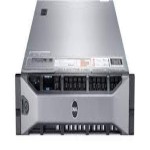Following are few short notes & my experience review for the 5kw SOLAR system including its pros/cons & general level information. I got this 5kw system installed at my home in Karachi from a local Solar installer in April 2021 with a hope to reduce my high electricity bill & to avoid daily load shedding.
Dueto daily loadshedding, highest inflation increasing day by day & its huge impact on electricity bill, I finally decided to acquire a 5kw Hybrid Solar system. Since I was low in budget therefore I acquired some low budgeted equipment’s in some sections (like battery & inverter).
System Details:
Details of system is as follows …
- Tesla 5kw Inverter (PK) – HLE 2020 Model / QTY: 1

- 445w Longi Solar Mono crystalline PERC solar panels / QTY: 10 (Total 4450 Watts)
- Raised mounted structure (consists on steel garters)
- 4mm DC wire from panels to the inverter (length was around 50 feet + )
- Safety Box: Including Batteries/Panel DC Breakers, Utility IN/OUT AC Breakers (TO/From Inverter) , Tomzen 3in1 AC Volt/Amp Protector
- Battery Parameters Settings: (its for Phoenix Tall Tubular Acid Batteries 185ah, QTY: 04 )
* Source Priority: SBU (SOLAR BATTERY UTILITY)
* Battery Charge Priority: SOLAR ONLY
* Battery Type: USER
* Battery Max charge Volts …
– CCV: 58.4
– FCV: 54.0
* Battery Cut-off Volts: 42.0 (This is the point where inverter will stop using batteries & will shutdown if utility line is absent. I would suggest to set it at 44 minimum)
– Battery Recharge Volts: 46.0 (This is a point where Inverter will stop discharging/using batteries, but if the utility power is not present it will keep using till Cut-Off values that is 42.0 in our case). Also this is the value, on which Output-2 will be turned off if the system is running on batteries to support extra backup time for output-1 load (critical load). set it according to your requirements by looking at attached battery chart.
– Battery Re-discharge Volts: 50.0 (This is the value on which system will start reusing batteries if there is NO utility or lesser solar/utility input)
* Battery Max Charge current: 20 amps (this is for 4x185ah acid tall tubular batteries)
See the Batteries table
Costing:
The above system costed around 530,000 Rs (in April 2021)
Note: 4 Batteries were purhcased separetely @ 96,000. After its deployment, I applied few enhancements like coloring of structure, replacement of some low graded wires/breakers , added high power cables for conneting internal wiring of inverter to db etc, & final deployment costing was around 550,000 PKR.
Production Result:
In summer season, this 4.5 capable solar system starts producing electricity early in the morning & onwards. After 8am I observe its production rises 1000+ watts & gradually increased as sun rises. I have high buildings behind/beside my roof therefore it takes some times for the sun light to fully reaches at panels. After 10/11am it starts its full production that is around 3000+ watts in average. In peak I have observed upto 3500 watts PV output.
PROS:
In general , electricity consumption at my house remains under 1000 watts round the clock. Probably I have to add few extra items to get full benefits of this system including AC’s.
No Loadshedding: After installing this system , It gave me peace of mind that I never had to worry about daily long loadshedding (specialy from 8 to 6pm, afterwards it shifts to batteries which provide 2/3 hours full backupo, then it shifts to KE). Most of the time I even dont know when the KE pwoer failure occurs (or loadshedding) , I realize about the utility failure/absence when I hear the loud generators noises from around the neighborhood. Alhamdolillah. From 10am onwards , I am able to operate all household electrical equipments including ground + 1st floor, 2 LCDs, 2 fridges, 8 Ceiling AC. 2 Pedastel Fans (runs almost 20 hours a day) , 2 Hp Boring Water Pump, 1 HP upper Motor, 1 HP sweet water motor, 1 KH IRONing & every other electrical peripherals. Of course we take precautions to operate all the heavy equipment like Motors , ironing step by step (no simultaneously). This is some management that we have to take care of, & now the family members are comrfotable with it as they know when to power on which equipemnt number wise.
I also have timers for all motors, so the family members only have to Power on motor & timer makes it turn off automatically. example Borign machine rune sfor 30 minutes, upper motor runs for 20 mnts etc & they turns off auto by the individual timers installed.
Monthly Electricity Bill Reduction:
After addition of this system & fine tuning the inverter/batteries parameters, I have observe 45-50 % reduction in monthly units consumption. (sometimes more then this as comapred to past consumption)
Energy Saving Appliances
After replacing few of electrical appliances with inverter based technology devices, I see noticeable reduction in power consumption. This mainly includes inverter Fridge, & above all, ac/dc inverter Ceiling Fans (which we have lots of). This really helped in late night hours as well either on utility or battery backup.
Monitoring
WEB/Mobile Access for usage stats
Tesla have provided nice web base portal to access the inverter usage stats. Also it have mobile app called TESLA LIVE as well. Screenshots attached.
CONS:
Household Appliance Usage Management: After installing the solar system. You have to perform household smart usage manageemnt for electrical appliances. Example you should never power on all the heavy load that includes,AC’s, Water pumps, ironing, etc all together. Use all such items that puts load only in peak hours.
& in off peak time, you should use minimum electrical devices to save the power (Saving of utility & batteries both)
Batteries Maintenance: dueto budget shortage , I acquired lead acid batteries (tall tubular) which have shorten life cycles, also they requires routine maintenance of battery acid refilling every 2-3 months (depends on usage & weather). Also it is better to place them at Dry & cool place (which I unfortunately dont have). These Batteries requires high time to recharge & they gets discharge quickly on heavy load. Also you need to set suitable batteries parameters at inverter settings to provide you with the required backup while keeping the batteries life healthy.
Inverter Maintenance:
This inverter model have 2 dust filters (right & left sides). They requires frequent cleaning on a weekly or every 15 days basis. Every time I pull them out, they are always full of dust. This inverter have 2 fans as well at bottom side. It is recommended that using blower device, you clean the internal dust as well on every other quarter. (This requires some precautions like completely turn off the inverter operations, removal of lower protection cover box, wearing safety equipment as well.)
Panel Maintenance: (P.I.T.—)
In our area, we receive lot of Dust in about every season,(In Karachi, we are used to bear hot weather for about 8-9 months a year). Dueto dusty seasons, I have to clean the panel every 2 weeks. Even in 2 weeks, the panels usually covered in dust totally. I acquired Hyundai Water Pressure Pump (105 bar) & it helps in cleaning, but still, it requires efforts to clean the panel this frequent & dueto raised structure and no proper place dueto poor design of fitting & weak roof ,it sometimes annoys a lot.


Some tips for Battery Settings
After a month of battery less operation (April 2021), It came to my knowledge that even in broad day light, if your home load suddenly exceeds (like 2Hp motor start torque) then the inverter gets trip because it doesnt have utility line or batteries to support the additional sudden jerk, thus it trip itself. therefore I added 4 Tall tubular batteries in May 2021 (These types of batteries are cheaper as compared to Lithium ion batteries) to support the inverter operations in load shedding time as well. I selected Phoenix tall tubular batteries which were more like a budgetary solution.
Phoenix Tall tubular Power Cube Series Mode: Tx1800 – 185ah / QTY: 4

Life Expectancy of Good Quality Tall Tubular Batteries
Charge Cycles [at 80% DOD]
One charge cycle is equal to discharging a fully charged battery up to 80% of its capacity and then fully charging it again. The charge cycle for tubular battery is around 800-1400. However, a low DOD [depth of discharge] increase the charge cycles of a battery. Therefore I would recommend that you donot discharge less then 50% , so in my case for 48v (4 batteries) , it would be around 48 / 48.5 +/-The actual charge cycles may differ from manufacturer to manufacturer
Life Expectancy
There are lots of conditions like ambient temperature, depth of discharge and number of charge cycles that affect the life expectancy of a battery. However, in identical conditions, tubular batteries have a higher life expectancy than flat batteries.
Solar Parameters Settings for minimizing Utility consumption :
- Saving Utility Units Consumption:
If you have no/less loadshedding, its better to utilize battery power at high level to save utility units/bill consumption. But using battery at high level will reduce your battery life (particularly with normal lead acid battery)
- Charging batteries via SOLAR Only ***
If you want to charge the batteries using only SOLAR power (recommended) , then set the charging source priority to **ONLY SOL**
- Output Source Priority ***
Set this option to SBU , which means that it will first use SOLAR power, if its fail or less, then it will switch to batteries, if batteries are discharged/not useable, then it will switch to Utility. This is is best setting if your want to cutoff utility usage when Solar & Batteries power are available. If your area experience high amount of loadshedding, then its better to use S-U-B , which means batteries will be used as last resort thus you maybe able to use the battery power in absence of utility.
Battery Utilization Chart (Single Battery)
You may multiply settings by number of batteries you have …
Inverter Restart Process.
At some occasions (example Error: Soft Bus Fail), I need to completly restart the inverter (Cold restart).
I assume you must have the safety box including input/output breakers for batteries, solar, grid etc.
Steps to Reboot solar Inverter/UPS
———————————–
** Turning OFF
1) Turn OFF inverter/UPS button. its black small button at right downside of UPS/Inverter.
2) Turn OFF ALL breakers including Solar / Battery / In & OUT (IN is utility Line , OUT is power going to home).
This way when UPS will not have any source of current input including solar, utility & battery, it will eventually turn off completely.
** Turning ON (Always wait few seconds between each action)
3) Turn on the (I) IN AC breaker (Its as grid power input for inverter)
4) Turn ON the UPS/Inverter Button
5) Turn ON the (S) Solar DC Breaker (Solar Panel power going to inverter)
6) Turn ON the (B) Battery DC Breaker (Batteries power going to inverter)
7) Turn ON the (O) Output AC Breaker (Inverter Output going to your house)
Some Final Thoughts on Local Tesla HLE 202 0 Model:
TESLA is a good cost effective (value for money) solution only. It do have software glitches. Mobile app is not 100% accurate particular in POWER STATS section & battery charging is also incorrectly shown even if battery is full. The inverter doesn’t let you know how much power is being drawn from the GRID, you have to perform manual calculation to see how much power is being used by battery or grid. (For GRID usage, I have installed 3in1 voltage protect which does shows the current AMPS usage along with total used data.
** The worst part of TESLA is lac of support. if you ever in need of principle support you will be in deep shit (my experience is for KHI).
Next time I would prefer to purchase ip65 capable inverter which is essential for Dusty environment like Karachi. Also always prefer Lithium batteries which have longer life cycle.













